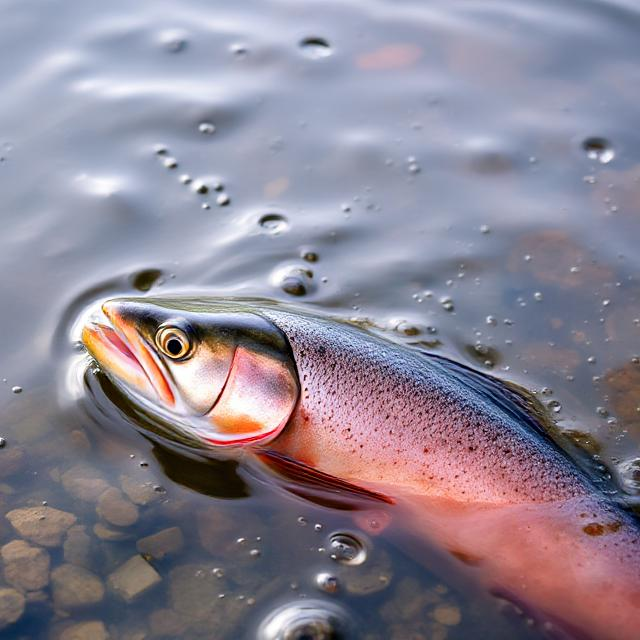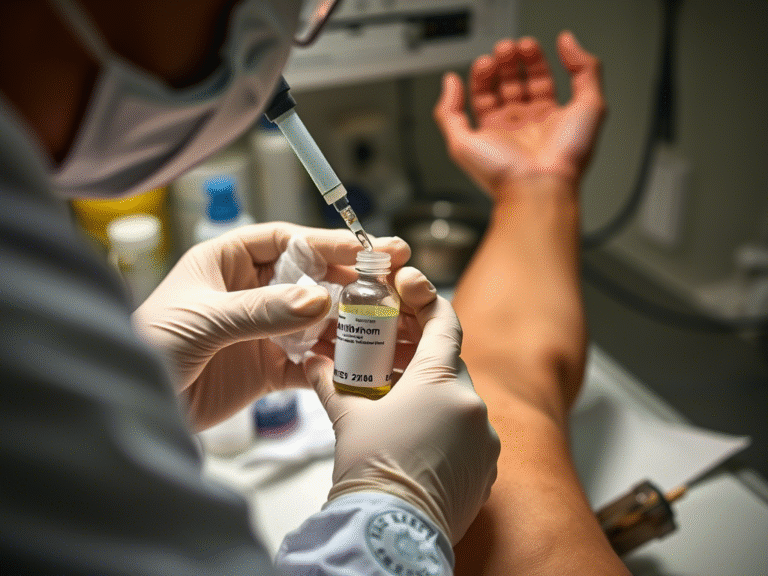We Are Drugging Salmon with Cocaine and Anxiolytics

We Are Drugging Salmon with Cocaine and Anxiolytics
On Their Journey to the Sea, These Ancient Creatures Face More Than Dams, Turbines, and Nets—They Confront the Ghosts of Modern Life That Lurk in the Waters
Few Animals Have Suffered as Much from Human Intervention as the Pug and Now, Salmon Are Joining That Unfortunate List
Among domesticated animals, few have endured as much human-driven suffering as the Pug . Decades of deliberate breeding to exaggerate certain physical traits have left this once-healthy breed riddled with severe anatomical malformations. Their extremely flattened skulls, bulging eyes, compressed airways, and misaligned jaws are the result of systematic artificial selection—prioritizing aesthetics over welfare. This cruel manipulation has led to a host of chronic health issues, making life painful and challenging for these dogs.
Now, another species is being added to the list of creatures bearing the brunt of humanity’s actions: salmon , but in a very different way. While pugs suffer due to genetic manipulation, salmon are struggling because of our growing addiction to pharmaceuticals—and the environmental fallout it creates.
Cocaine in the Water: A Shocking Discovery
In June 2020 , officials from the State Environment Agency of North Rhine-Westphalia (LANUV) in Germany stumbled upon an alarming scene at a fish farm. Atlantic salmon were behaving erratically—frantically flailing, attempting to leap out of the water, and exhibiting chaotic movements that defied natural behavior. Experts concluded that the only plausible explanation was exposure to substances causing extreme discomfort.
The culprit? Cocaine . Traces of the drug had infiltrated the water supply, likely through wastewater contaminated by human consumption. For salmon, which rely on precise instincts for survival, such exposure disrupts their ability to navigate, feed, and avoid predators. The discovery highlighted how pervasive pharmaceutical pollution has become—and how deeply it affects aquatic ecosystems.
“Salmon Enfarlopados”: When Cocaine Hit the Waterways
The strange situation arose as part of a species conservation project, and due to the unusual nature of the incident, it was documented in the agency’s annual report under the title “Salmon with Cocaine.” After analyzing the water in the streams feeding the tanks, a long list of common pesticides, herbicides, and drugs was ruled out until two striking substances were detected: yes, cocaine and its metabolite benzoylecgonine.
A Documented Reality: How Drug Pollution Is Affecting Aquatic Life
The clear presence of cocaine in a nearby stream led investigators to conclude that a reaction to the drug could not be ruled out—far from it. The most plausible hypothesis pointed to illegal wastewater dumping into the creek bed, a practice common in both Europe and the United States, where clandestine drug laboratories and trafficking networks dispose of their waste in bodies of water.
Far from being an isolated incident, the situation in Germany added to a growing body of research documenting how residues of illegal drugs in rivers and streams directly impact aquatic fauna. In the United Kingdom, Spain, Central Europe, and other regions, substances like methamphetamine, MDMA, and others have been detected at levels that, though low, are sufficient to alter fish behavior.
A Groundbreaking Study
One scientific study went even further: researchers intentionally exposed trout to methamphetamine doses similar to those found in rivers. The results were striking. The fish developed signs of addiction, exhibited behavioral changes, and, when moved to clean environments, showed withdrawal symptoms.
These experiments revealed that many drugs designed to affect the human brain also interact with the neural systems of other species, producing unpredictable and potentially harmful consequences.
And Then Came the Anxiolytics. Much More Awaits Salmon Than Just Cocaine.
In groundbreaking research, a team of scientists has confirmed that drug residues circulating in rivers are not only reaching aquatic species but are also altering their behavior in the wild. The study, published in Science , tracked the migration of 279 young Atlantic salmon in Sweden’s Dal River after implanting them with slow-release capsules containing two drugs commonly found in contaminated waters: clobazam , an anxiolytic from the benzodiazepine family, and tramadol , an opioid painkiller.
The findings revealed how these pharmaceuticals, even at low concentrations, significantly impacted the salmon’s natural behaviors, raising concerns about the broader ecological consequences of drug pollution in waterways.
What Did They Find?
The researchers discovered that salmon exposed to clobazam reached the Baltic Sea at a higher rate than their unmedicated counterparts. Remarkably, they did so up to three times faster when navigating hydroelectric dams, bypassing turbines with an unusual boldness uncommon for their species. This result surprised scientists, as they suspected that such heightened audacity might come at the cost of reduced survival chances.
“Artificial” Bravery
While reckless behavior appeared to aid migration by shortening exposure to deadly obstacles like turbines, experts caution that this alteration of natural instincts could have significant ecological consequences. Clobazam caused the fish to adopt a more individualistic and less gregarious behavior , which could heighten their vulnerability to predators once in the open ocean.
Parallel laboratory experiments reinforced this concern: medicated salmon were far less likely to form schools—a critical collective defense mechanism. This tendency to separate from the group would make them more visible and easier targets for predators, raising questions about their long-term survival. Unfortunately, the study could not track the fish’s fate once they reached the Baltic, leaving their ultimate resilience uncertain.
Silent Pollution. In the Background, Another Problem
The research provides conclusive evidence that the effects observed in laboratory studies with psychiatric drugs—such as reduced fear responses, loss of social behavior, and increased risk-taking—are also occurring in natural environments. Alarmingly, these effects are happening at doses comparable to those found in real-world ecosystems.
This finding underscores growing concerns about the so-called “pharmaceutical soup” flowing through the world’s rivers. To date, more than 900 pharmacologically active ingredients have been detected in natural waters, ranging from antibiotics and antidepressants to chemotherapy drugs. Many of these substances target brain functions common to multiple species, meaning fish and other aquatic animals are exposed to unforeseen side effects, dangerous combinations, and interactions that remain poorly understood.
The silent, pervasive nature of this pollution poses a significant threat to aquatic life, highlighting the urgent need for further research and action to mitigate its impact on ecosystems.
A Global Threat
Ecotoxicology specialist Karen Kidd recently emphasized that the real danger lies in the accumulation of multiple substances with varying effects, the combined consequences of which remain unpredictable. For scientists, this is a global issue that demands a systemic response: there is an urgent need to develop more advanced wastewater treatment plants capable of removing these compounds before they reach rivers. Additionally, promoting the design of more biodegradable medications is critical.
The key, experts warn, is to act before these subtle yet persistent changes irreversibly undermine ecosystems that have taken millennia to balance. While technology can continue to detect alterations, only decisive action can halt the invisible degradation of life underwater.
In the meantime, between anxiolytics that make them reckless and cocaine-contaminated streams that disrupt their natural rhythms, the age-old struggle of salmon against currents and predators has gained a new and unprecedented adversary: the invisible residues of human addictions.





